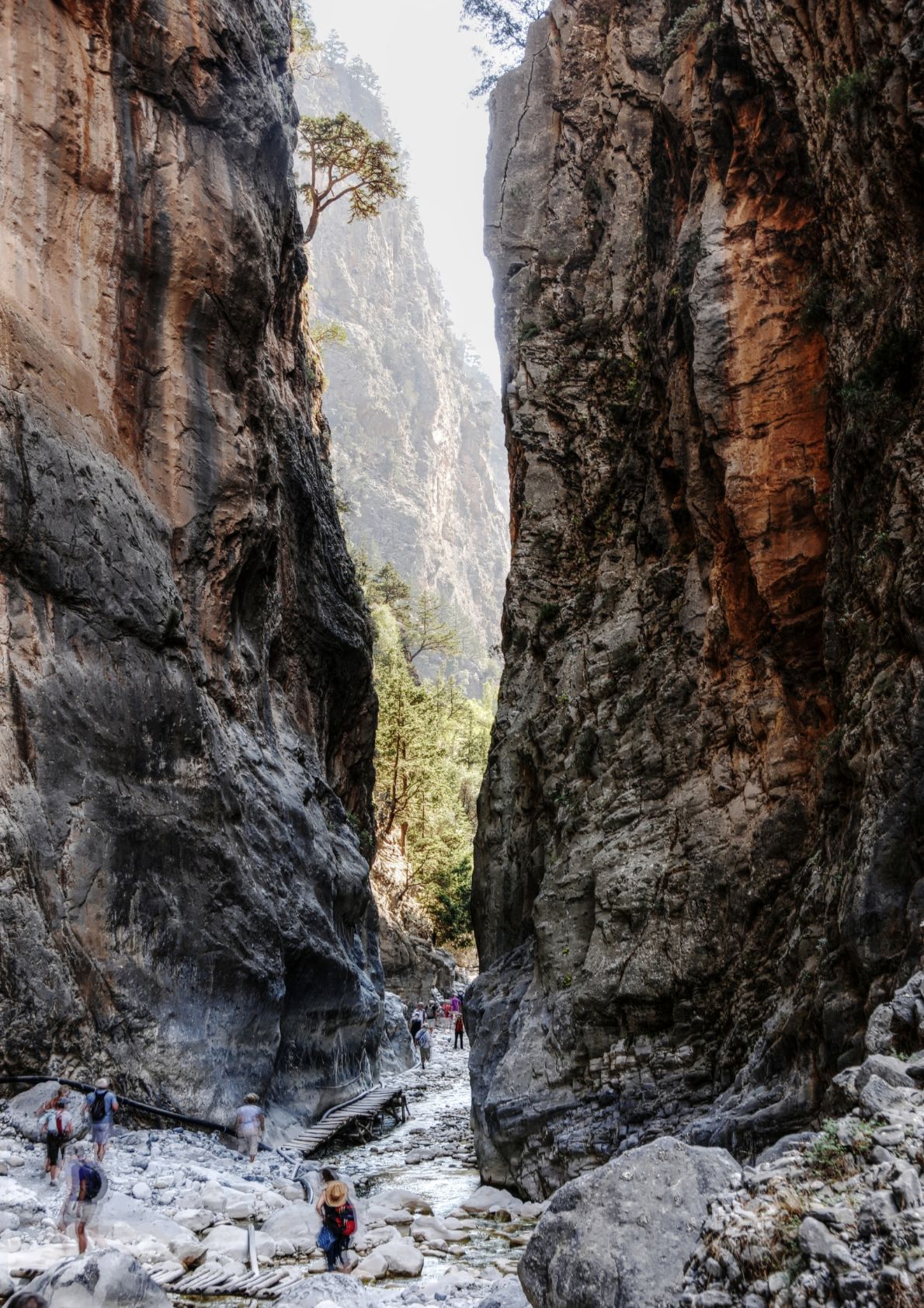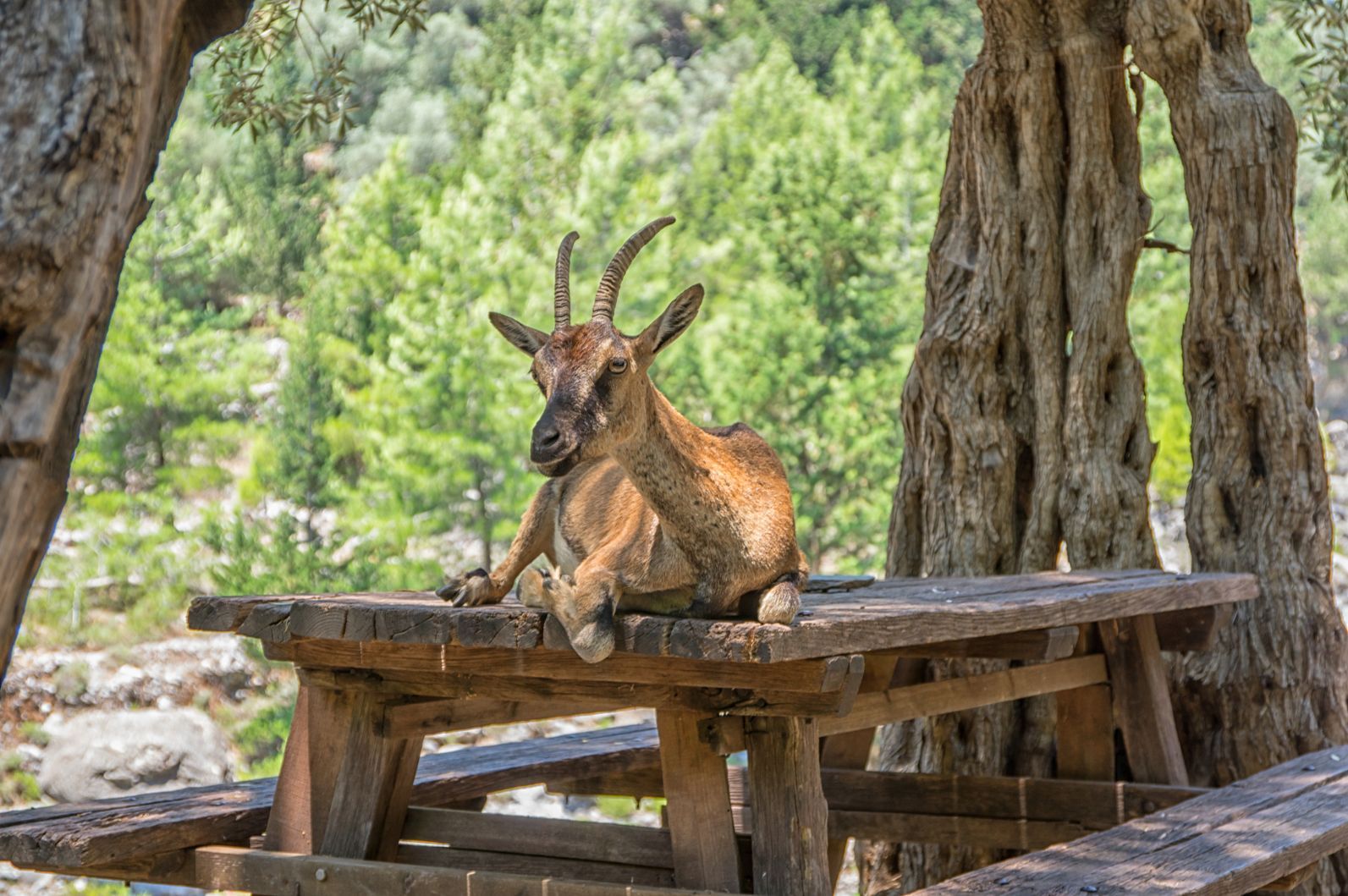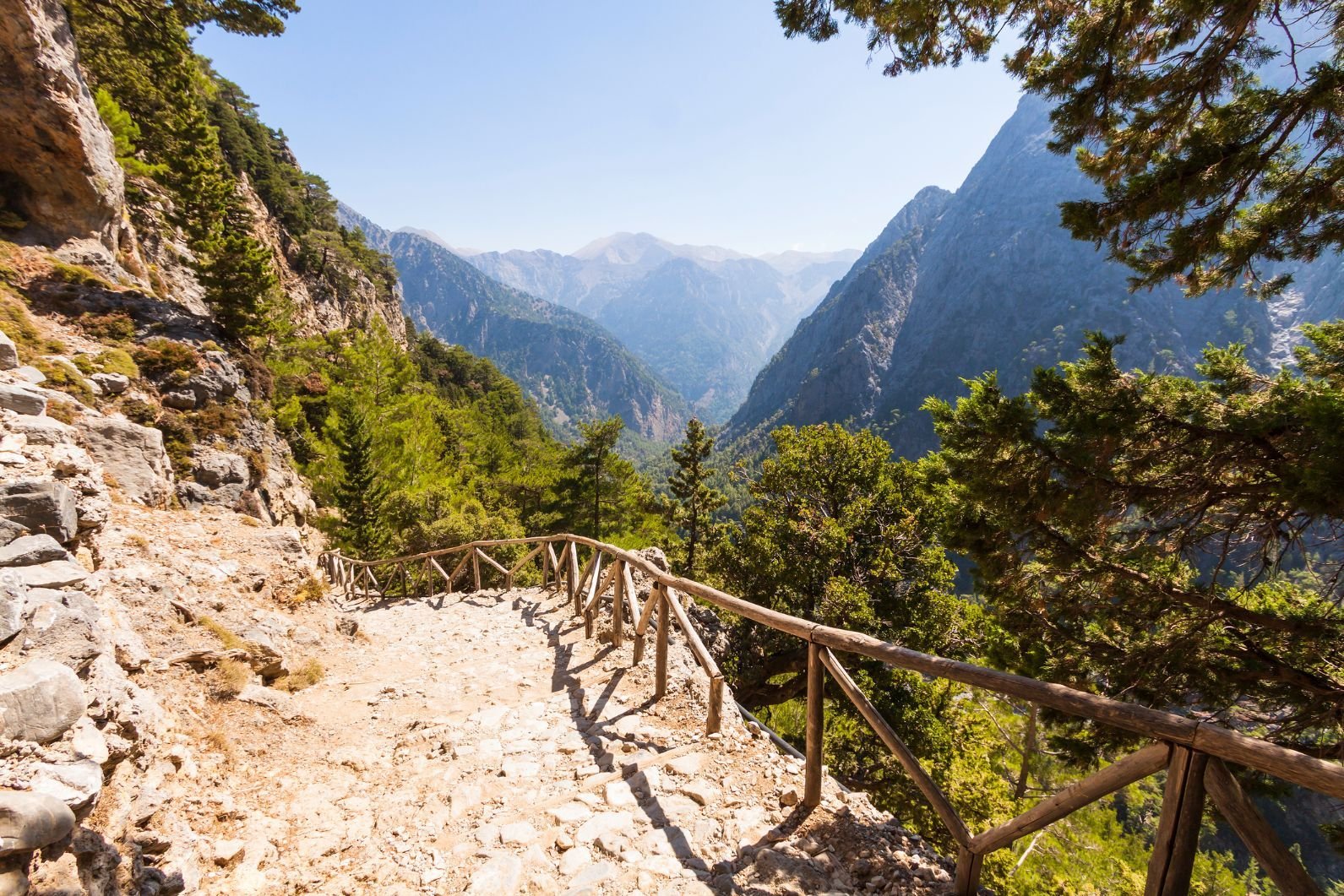The deep blues of the Libyan sea sparkle beyond Agia Roumeli, a small, secluded coastal town in southwest Crete. There is no road to Agia Roumeli. You can only reach the village, with its pebble beaches, far-reaching sea views and dry, brown mountain surroundings by foot or boat.
The town forms the southern entrance to Samaria Gorge, the longest gorge in Greece and one of the longest in Europe. It’s 16km long (with the thru-hike being 18km). As we walk out of the village after a night by the sea and begin the route, we find ourselves walking kilometres of dusty track uphill to the gorge. The ruins of Castle Agia Roumeli sit high to our left. We also find ourselves completely alone.
The gorge hid undercover allied units who were able to send off radio messages from their mountain hideaway.
Samaria gorge is the most popular hiking spot in all of Crete, with tens of thousands of hikers walking the route each year. But the standard route starts from the northern entry point at Xyloskalo restaurant (1230m), then heads steeply down to Agia Roumeli. By starting at sea level, we’re going to be walking uphill all day. But it’s also going to be a long time before we see another hiker.

Samaria Gorge is not only a popular walking trail. It’s also a site of special significance in the heritage and story of Crete. Historically, the gorge of Samaria, and the village of Samaria within it, have been a safe haven for freedom fighters and for the oppressed looking to escape invaders.
The location of the gorge in the White Mountains, and its obvious defensive qualities - the tough, rocky terrain underfoot and sections of narrow gorge trail - have provided fugitives with cover and protection from Venetian, Turkish and German invaders over the years. The area itself has been inhabited for millennia. Agia Roumeli was formerly known as Tarra, and was one of the ‘100 cities of Crete’ referred to by the philosopher Homer in the Iliad. The town even used to export wood to ancient Egypt and Troy.
We venture onwards and enter Samaria National Park, where 450 endemic plant species await, and soon come to Samaria's ‘iron gates’.

There is no iron at the ‘iron gates’, but the power of the geological features around you - the marble, limestone or dolomite rock - means that the name somehow feels appropriate. Walking along a four-metre wide section of riverbed, the cliff walls rise up 300 metres on either side of us, some sections rugged, others smooth like they were specially sculpted.
The day is warming up, and the cliff walls provide welcome shade. By midday, we’re told, this area will be swarming with hikers. As we walk through, we’re still yet to see another soul.
We pass a spring at the clearing of Christos, and criss-cross the river on stones and bridges, all with the gorge walls dominating our view. It’s not hard to see why the tight, bumpy route is tough to attack. Walking it, you almost feel like you’re on your way to a secret haven hidden away in the mountains.

The village of Samaria is that hideaway. Deep in the White Mountains, it was first inhabited in the Byzantine era. It stayed inhabited until 1962, when the creation of the National Park meant those within were forced to leave. It is undoubtedly not talked about enough, these days, that the creation of most of the world’s national parks usually comes through the forced removal of its inhabitants.
Today, some of the ruined buildings have been restored, and are now used by house doctors, or park authorities. The only permanent residents, though, are the kri-kri, also known Cretan goat, which are happily dotted around the place.

You can still spot old olive trees around, grown mainly by old residents to provide an extra little snack. Samaria, while beautiful, has never been the easiest place to live. During winter, the gorge walk isn't possible due to the water depth.
The challenge of reaching the spot has, in some ways, always been the appeal. In the 14th century, it became a hiding spot for freedom fighters trying to fend off the ruling Venetians, who couldn’t reach the rebels through the narrow gorge.
We learn the meaning of ‘Xyloskalo’ - which translates as ‘wooden staircase’ - as we follow the stones up a fierce ascent to 1230m.
In 1770 the Turks invaded, and are said to have pursued 4000 women and children to the White Mountains, where a hero known as Giannis Bonatos and 200 men fended the invaders off at the Gates.
One particularly notable attempt to reach Samaria came in 1867, when 4000 Turkish troops landed, and were sent to the gorge. Again they failed to reach it, unable to conquer the challenging terrain. They did, however, burn Agia Roumeli down to the ground. By 1869, Turkey is said to have claimed all of Greece. All, that is, except for Samaria Gorge.
More recently, during the German WWII occupation of Crete, the gorge hid undercover allied units who were able to send radio messages from their hideaway. Germany knew this was happening, but they were unable to prevent it.

Samaria is now a rest spot, with shade, benches and water; where we meet many of the hikers who began their day at Xyloskalo and are headed for Agia Roumeli.
Heading on, we roll over simple, shaded paths and pass the Agios Nikolaos church, surrounded by enormous cypress trees. It feels a world away from the terrain of the gorge riverbed. The fierce uphill soon begins, but with a stop at the Neroutsiko spring en route, these final four kilometres are manageable, and even enjoyable in the shade of the Calabrian pine forests.
We learn the meaning of ‘Xyloskalo’ - which translates as ‘wooden staircase’ - as we follow the stones up a fierce ascent to 1230m, with wooden bannisters protecting us from a fall.
From Xyloskalo, you can look back down at a landscape of greenery and a hike through a huge variety of mountainous terrain - and the history of Crete.
Inspired? Check out our new kayaking and wild hike in Crete adventure holiday - which will take you up the Samaria Gorge!


